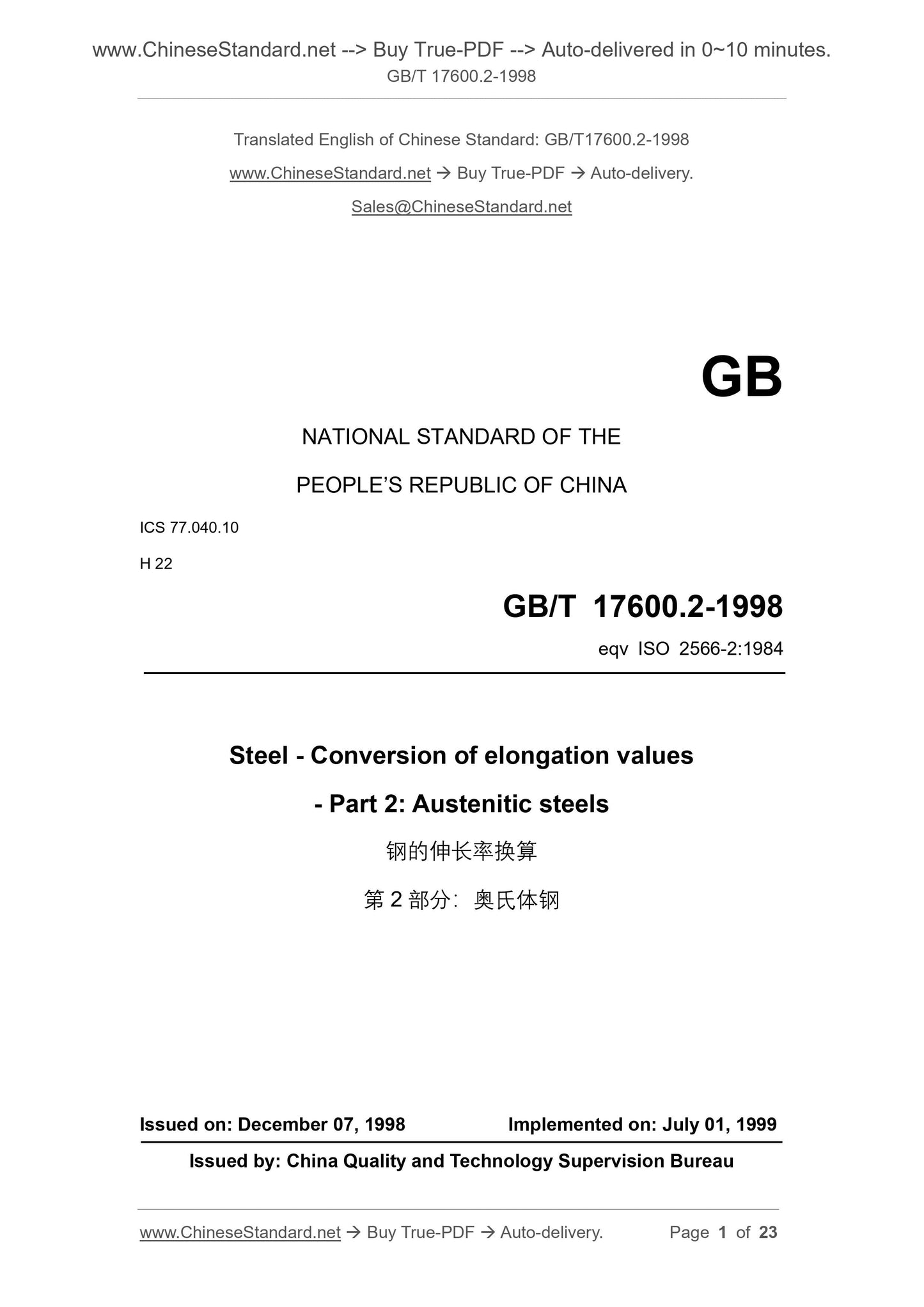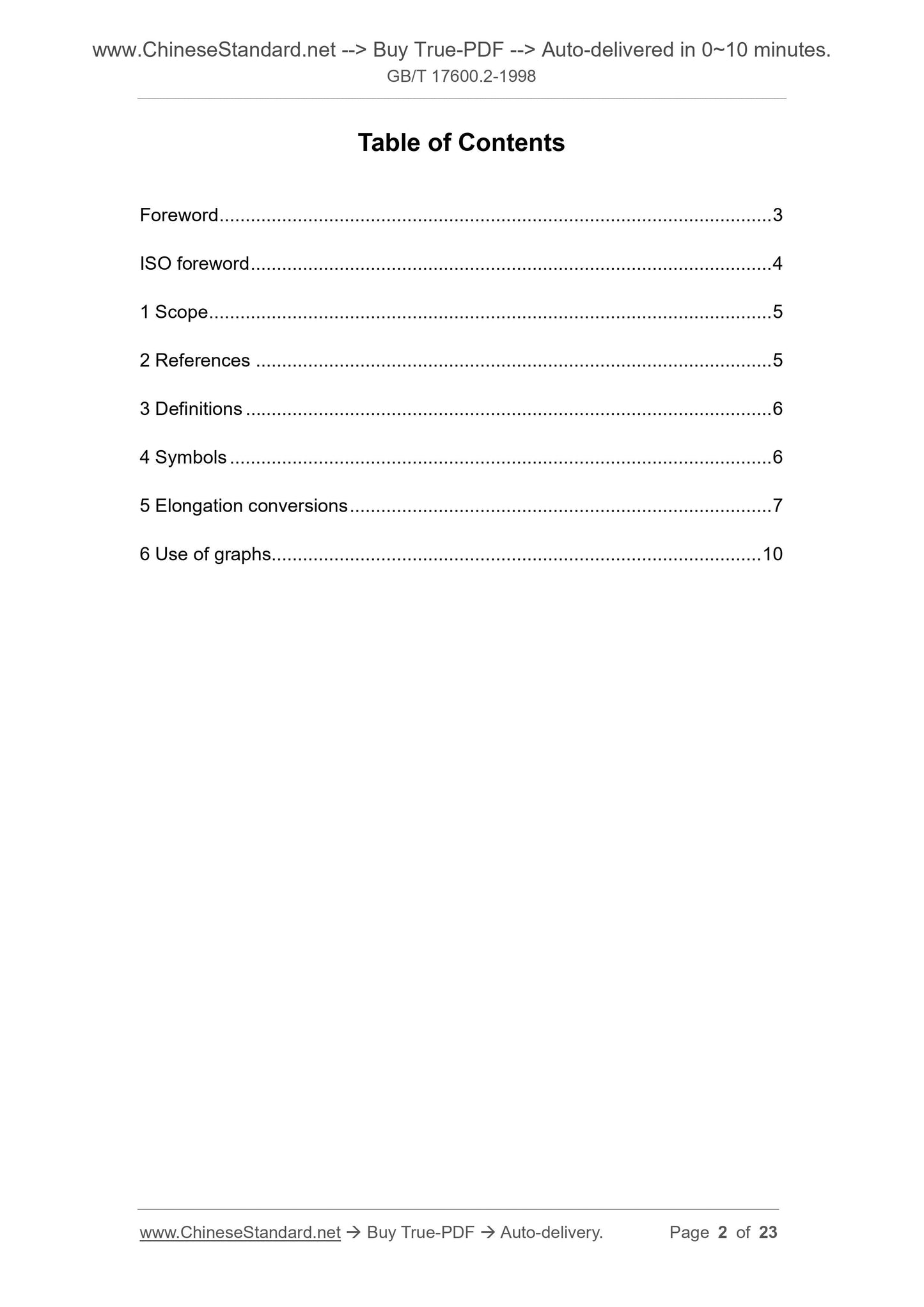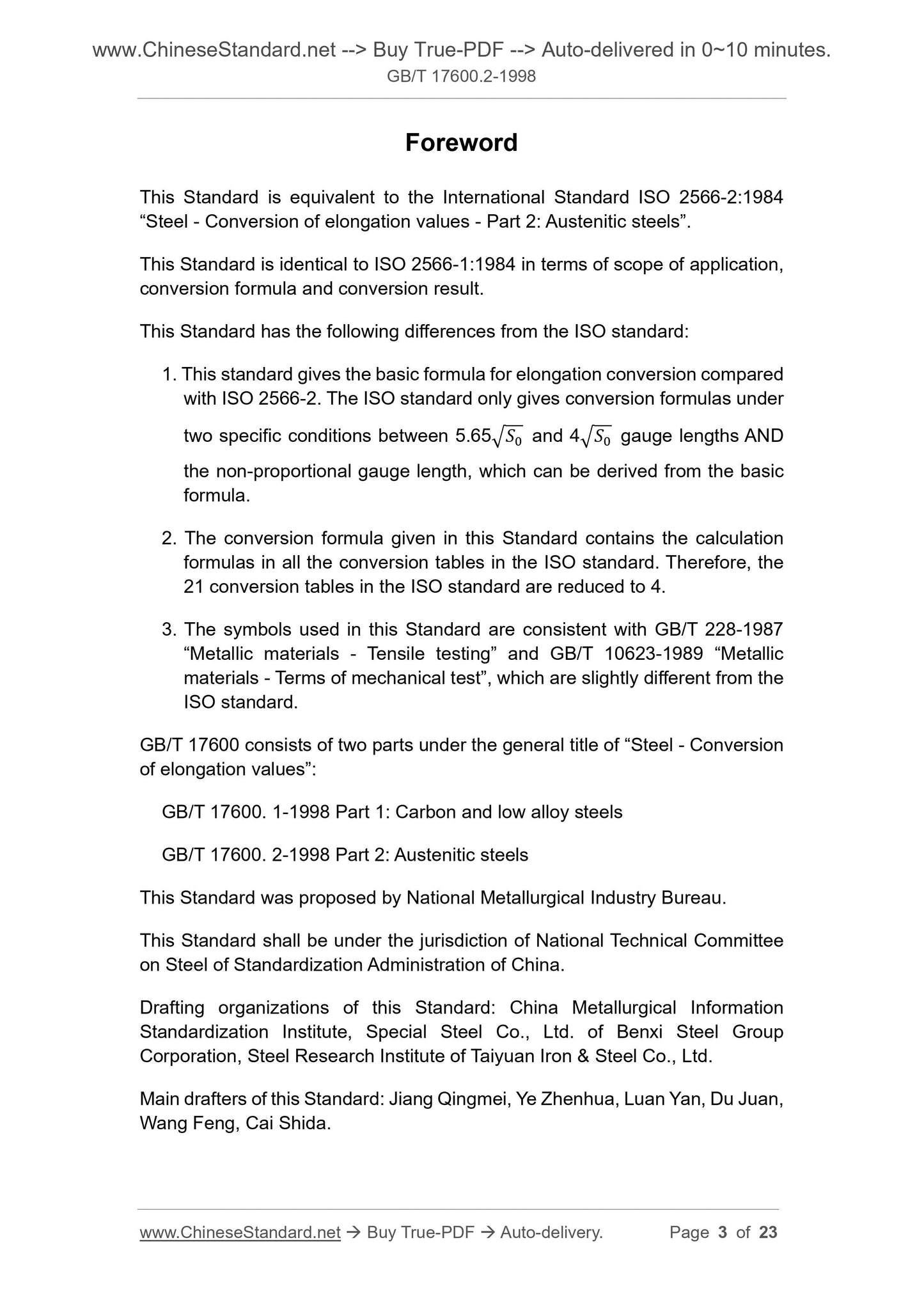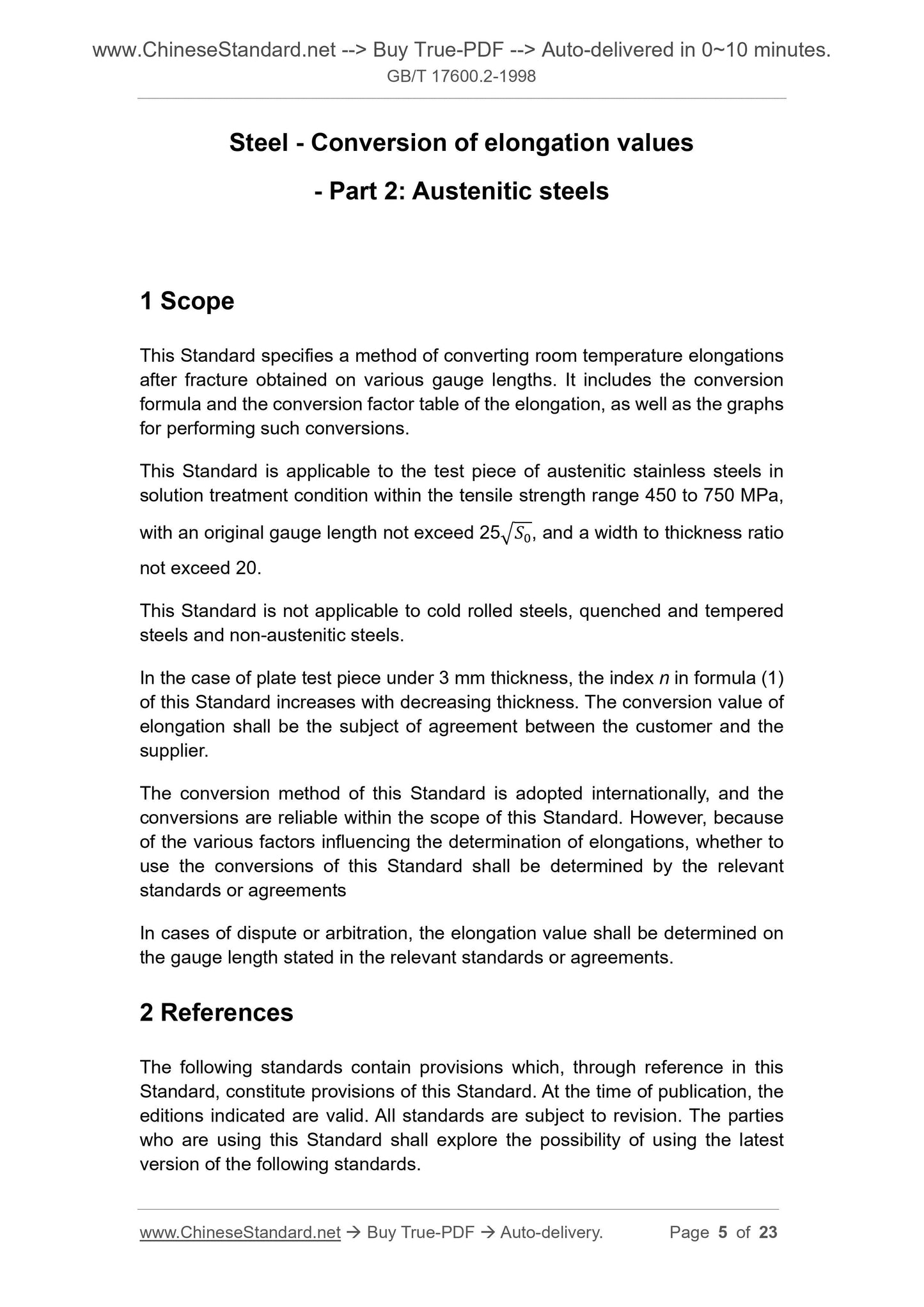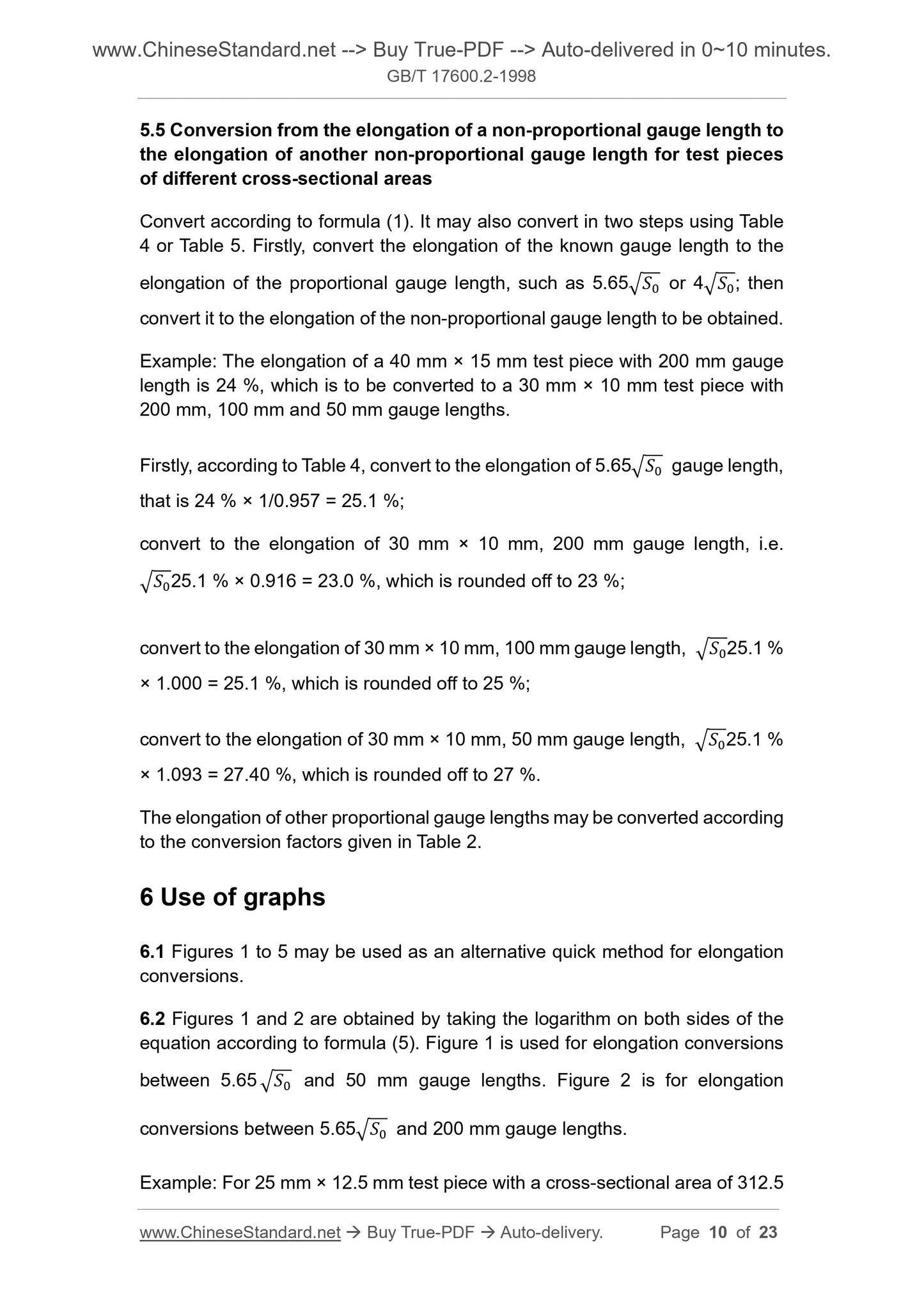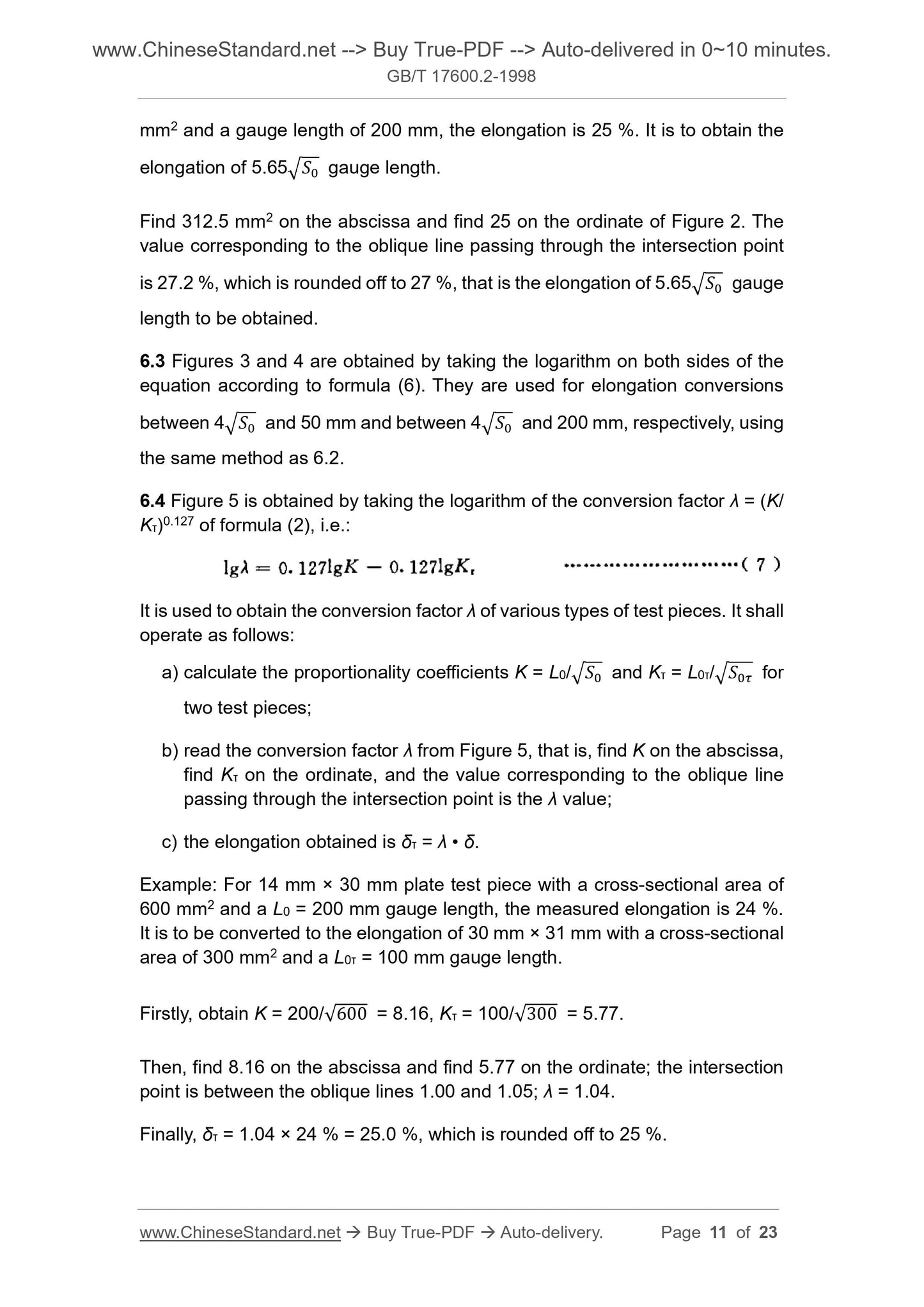1
/
of
6
www.ChineseStandard.us -- Field Test Asia Pte. Ltd.
GB/T 17600.2-1998 English PDF (GB/T17600.2-1998)
GB/T 17600.2-1998 English PDF (GB/T17600.2-1998)
Regular price
$90.00
Regular price
Sale price
$90.00
Unit price
/
per
Shipping calculated at checkout.
Couldn't load pickup availability
GB/T 17600.2-1998: Steel. Conversion of elongation values. Part 2: Austenitic steels
Delivery: 9 seconds. Download (and Email) true-PDF + Invoice.Get Quotation: Click GB/T 17600.2-1998 (Self-service in 1-minute)
Newer / historical versions: GB/T 17600.2-1998
Preview True-PDF
Scope
This Standard specifies a method of converting room temperature elongationsafter fracture obtained on various gauge lengths. It includes the conversion
formula and the conversion factor table of the elongation, as well as the graphs
for performing such conversions.
This Standard is applicable to the test piece of austenitic stainless steels in
solution treatment condition within the tensile strength range 450 to 750 MPa,
with an original gauge length not exceed 25ඥ𝑆, and a width to thickness ratio
not exceed 20.
This Standard is not applicable to cold rolled steels, quenched and tempered
steels and non-austenitic steels.
In the case of plate test piece under 3 mm thickness, the index n in formula (1)
of this Standard increases with decreasing thickness. The conversion value of
elongation shall be the subject of agreement between the customer and the
supplier.
The conversion method of this Standard is adopted internationally, and the
conversions are reliable within the scope of this Standard. However, because
of the various factors influencing the determination of elongations, whether to
use the conversions of this Standard shall be determined by the relevant
standards or agreements
In cases of dispute or arbitration, the elongation value shall be determined on
the gauge length stated in the relevant standards or agreements.
Basic Data
| Standard ID | GB/T 17600.2-1998 (GB/T17600.2-1998) |
| Description (Translated English) | Steel. Conversion of elongation values. Part 2: Austenitic steels |
| Sector / Industry | National Standard (Recommended) |
| Classification of Chinese Standard | H22 |
| Classification of International Standard | 77.040.10 |
| Word Count Estimation | 18,124 |
| Date of Issue | 12/7/1998 |
| Date of Implementation | 7/1/1999 |
| Adopted Standard | ISO 2566-2-1984, MOD |
| Issuing agency(ies) | State Quality and Technical Supervision |
| Summary | This standard specifies the different gauge conversion method at room temperature between Elongation, including the conversion formula and the translation elongation factor for such conversion tables and graphs. |
Share
